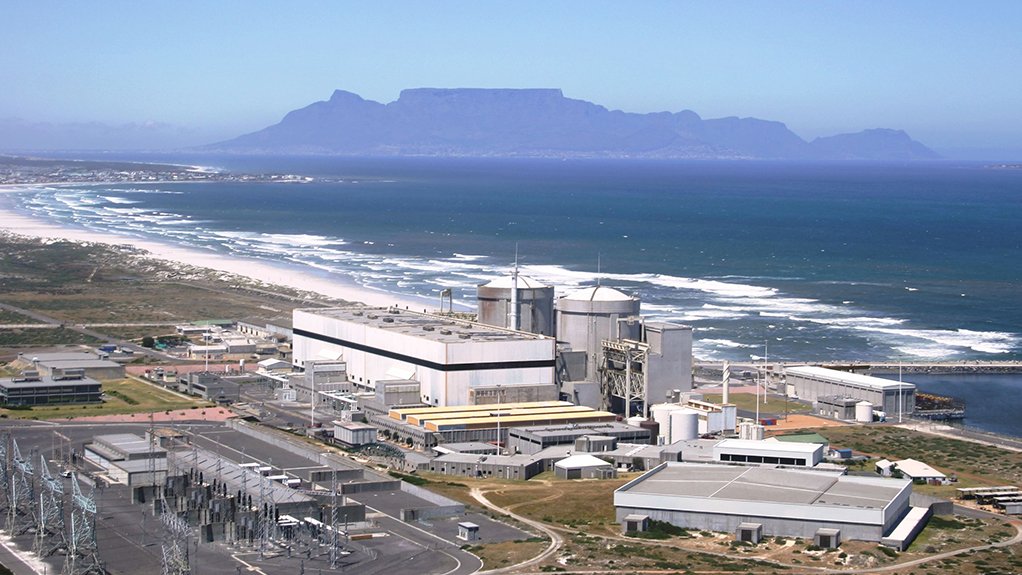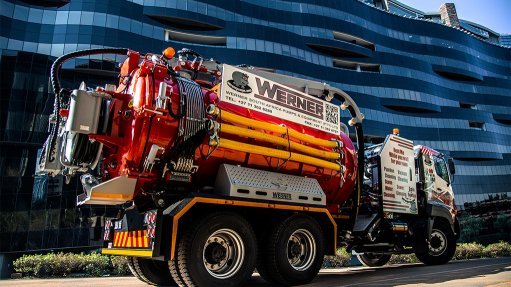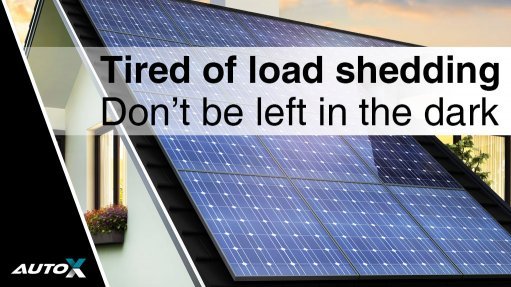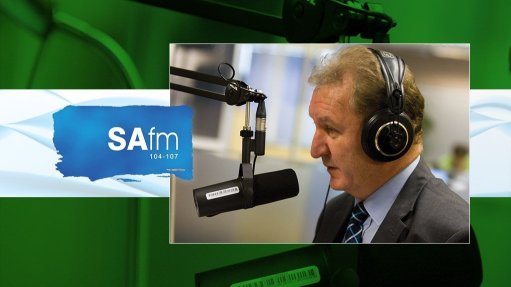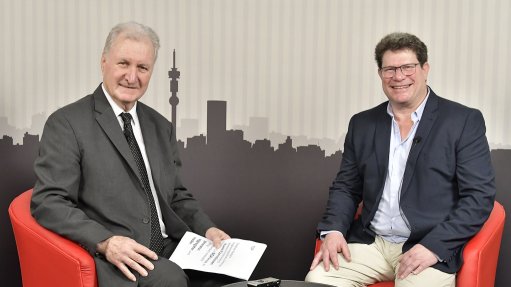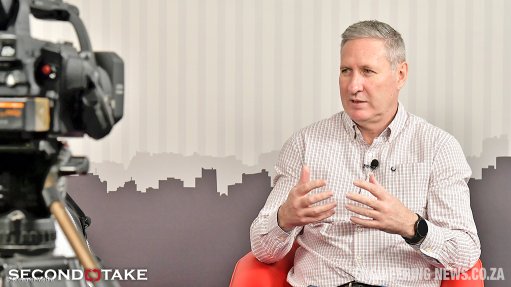PCC discussion reveals opposing views on nuclear power, despite it being ‘necessary’ for net zero
International and local associations, as well as various energy experts, agree that achieving net zero in the 44 countries that have committed thereto will be virtually impossible without including nuclear power in the energy mix.
Nuclear is widely recognised as a key energy source in the transition to a sustainable and low-carbon future; failing which, countries, including South Africa, risk falling short on their climate goals.
The Presidential Climate Commission (PCC) on February 19 hosted a webinar discussing the benefits and considerations of adding more nuclear power to South Africa’s energy mix, particularly new technology such as small modular reactors (SMRs) that offer a fresh alternative in terms of scale, cost and timelines.
Department of Mineral Resources and Energy nuclear energy deputy director-general Zizamele Mbambo reaffirmed government’s stance during the discussion that nuclear energy shall form part of South Africa’s strategy to mitigate climate change, as well as its diversification of primary energy sources to ensure security of supply.
He explained that nuclear power plants had flexibility in design to follow load twice a day and that newer designs were even more flexible and could match mid-merit plans.
“Current and new reactor designs can ramp power output up or down to match or balance grid demand,” Mbambo added.
He also said nuclear plants could create long-term and sustainable jobs, including in the ten-year period of construction, the 60-year period of operation and the ten-year decommissioning period.
Mbambo cited the example of the Koeberg power station, in the Western Cape, which currently accounts for 5% of South Africa’s energy mix at 12.4 TWh through two nuclear reactors.
He said the power station had contributed more than R30-billion to the province’s GDP and sustained more than 19 000 jobs.
There is also an opportunity for more skills development with new nuclear power plants, since 89% of jobs in the nuclear sector require high levels of skills.
According to Mbambo, nuclear had low greenhouse-gas emissions over its lifecycle, as well as low environmental impacts, while currently producing the lowest cost electricity in South Africa at 15c/kWh.
However, Mbambo admitted the capital cost of nuclear builds was higher than other energy sources, as well as in the first few years of operation, but that it became cheaper the longer it operated.
“Nuclear offers a unique proposition for a net zero grid given its clean generation capability, no intermittency, low land use, concentrated local benefits and direct heat applications.”
Mbambo suggested that the decommissioned coal fleet could be repurposed for nuclear power plants, which can save trillions of rands on new transmission infrastructure and about 30% of a nuclear plant’s typical capital cost. These plants could also work alongside chemical plants and renewable-energy generation to create integrated energy systems.
The sizes of nuclear plants vary between 1 MW and 20 MW for microreactors, 20 MW and 300 MW for SMRs and 300 MW and 1 GW for megareactors.
Additionally, nuclear is highly suited to cheap hydrogen production and industrial applications to produce heat.
Energy adviser for the Association of Municipal Electricity Utilities Professor Vally Padayachee said municipalities faced significant challenges in upgrading and expanding their electricity infrastructure so support the integration of renewable energy. Many existing systems were outdated and inadequately equipped to handle the variability associated with renewable-energy sources.
He agreed with Mbambo that nuclear stood out as a low-carbon energy source that could provide reliable and stable electricity, with its integration in the energy mix being able to help enhance the overall stability of the grid and resolve for the intermittency of renewables.
Padayachee pointed out that nuclear energy had a very high energy density compared with fossil fuels and renewables; a small amount of nuclear fuel could produce a large amount of energy, which reduced the need for extensive fuel supply chains and infrastructure.
“By incorporating more nuclear power, municipalities can significantly reduce emissions and provide reliable electricity supply. Nuclear fuel is also less susceptible to market fluctuations and volatility, which provides predictability for municipalities.”
Padayachee added that the long-term contracts associated with nuclear energy enabled predictable fuel pricing, which helped to stabilise electricity prices.
He suggested that more municipalities could enter into long-term and de-risked power purchase agreements spanning 25 to 50 years at a pace and scale that government could afford.
Commenting on the use of SMRs, Padayachee said it was a compelling off-grid solution since it could be installed remotely for localised energy generation, reducing the need for costly grid expansion. Additionally, the establishment of these reactors could stimulate local economic activity.
New designs of SMRs offer smaller footprints and reduced resource requirements compared with traditional nuclear plants. He cited the example of increasing interest in using SMRs to power data centres, with Microsoft, Google, Meta and Amazon planning to integrate nuclear reactors in addition to renewable energy in their companies – to ease their respective electricity grid stress.
South African National Energy Development Institute head of energy secretariat Professor Sampson Mamphweli agreed with Padayachee and Mbambo that retrofitting existing fossil fuel plants with SMRs could be an economical and financially viable solution, while helping to address the likely job losses in the coal hub that was Mpumalanga, once coal-fired plants are decommissioned.
He was also confident about South Africa already having extensive nuclear technology experience, which bodes well for future plants. Mamphweli also said the system cost was lower for nuclear power than most other energy sources, particularly if SMRs came at a lower capital cost than traditional plants.
PCC commissioner Mbulaheni Mbodi maintained that South Africa could not achieve net zero emissions without nuclear and that ultimately all technologies had pros and cons that had to be weighed. “Rigid safety guidelines that already exist in the country cater to many of the risks of nuclear.”
CONCERNS
From an investment point of view, Stellenbosch University sustainable development academic Professor Mark Swilling stated his concern about the affordability of building nuclear plants, given South Africa’s highly constrained fiscus and conservative central bank.
He added that the affordability of nuclear electricity depended a lot on the capacities of the plants and whether these plants were able to maintain a high energy availability factor.
Moreover, Swilling pointed out that nuclear plants were notorious for ending up being more expensive than initial estimates, with soft costs such as design faults, rectifying construction problems and project mismanagement often not being factored in, or better accounted for.
He referenced the example of a now closed plant in Utah that estimated an electricity cost of $55/MWh in 2016, which ultimately progressed to $80/MWh by 2023, owing to this model having assumed a 95% capacity factor from the beginning and not accounting properly for fabrication failures.
South Africa is already a high-cost environment, which investors consider for mass infrastructure investments of this nature. “To what extent can the South African capital markets handle a large-scale investment that is nuclear in a major centralised space. Perhaps the Public Investment Corporation can change capital flow, but the bond market really drives investment and is more focused on renewables at the moment,” Swilling explained.
There is also the problem of South Africa aiming for self-sufficiency with respect to energy, which would be compromised if the country were to become dependent on external flows of finance to build nuclear plants, particularly over such a long timeframe.
Environmental researcher Dr Neil Overy mentioned in the comment section of the discussion that Koeberg’s cost increased from an estimated R875-million by government in 1976 to more than R3-billion by 1985.
Centre of Environmental Rights climate advocacy lawyer Brandon Abdinor highlighted the issue of nuclear waste needing to be managed for tens of thousands of years and incidents of spills being very costly financially and socially.
With nuclear projects known to run over time and over budget, what was to say this would be different with new plants in South Africa, he argued.
Southern African Faith Communities’ Environment Institute executive director Francesca de Gasparis pointed out the main issues with nuclear from a public interest perspective were its financial feasibility, its implication on electricity pricing for those most vulnerable, radioactive waste management and public participation while plants are being developed or expanded.
“A lot of scepticism toward nuclear energy persists, influenced by past controversial deals and concerns over safety and environmental impacts. The public will ultimately bear the high costs and risks of nuclear energy. Government also often fails to consult and properly inform the public.”
She cited the example of a historical lack of information and transparency on the part of Eskom, Koeberg and the National Nuclear Regulator.
De Gasparis was also convinced that SMR power costs would be much higher than that of renewables and energy storage, while immediate job creation potential would be limited, given the long development timelines of nuclear plants.
Her biggest concern is the long-lived highly toxic radioactive waste that is produced by nuclear plants, saying there are too few economic benefits to justify that social cost.
Article Enquiry
Email Article
Save Article
Feedback
To advertise email advertising@creamermedia.co.za or click here
Comments
Press Office
Announcements
What's On
Subscribe to improve your user experience...
Option 1 (equivalent of R125 a month):
Receive a weekly copy of Creamer Media's Engineering News & Mining Weekly magazine
(print copy for those in South Africa and e-magazine for those outside of South Africa)
Receive daily email newsletters
Access to full search results
Access archive of magazine back copies
Access to Projects in Progress
Access to ONE Research Report of your choice in PDF format
Option 2 (equivalent of R375 a month):
All benefits from Option 1
PLUS
Access to Creamer Media's Research Channel Africa for ALL Research Reports, in PDF format, on various industrial and mining sectors
including Electricity; Water; Energy Transition; Hydrogen; Roads, Rail and Ports; Coal; Gold; Platinum; Battery Metals; etc.
Already a subscriber?
Forgotten your password?
Receive weekly copy of Creamer Media's Engineering News & Mining Weekly magazine (print copy for those in South Africa and e-magazine for those outside of South Africa)
➕
Recieve daily email newsletters
➕
Access to full search results
➕
Access archive of magazine back copies
➕
Access to Projects in Progress
➕
Access to ONE Research Report of your choice in PDF format
RESEARCH CHANNEL AFRICA
R4500 (equivalent of R375 a month)
SUBSCRIBEAll benefits from Option 1
➕
Access to Creamer Media's Research Channel Africa for ALL Research Reports on various industrial and mining sectors, in PDF format, including on:
Electricity
➕
Water
➕
Energy Transition
➕
Hydrogen
➕
Roads, Rail and Ports
➕
Coal
➕
Gold
➕
Platinum
➕
Battery Metals
➕
etc.
Receive all benefits from Option 1 or Option 2 delivered to numerous people at your company
➕
Multiple User names and Passwords for simultaneous log-ins
➕
Intranet integration access to all in your organisation



